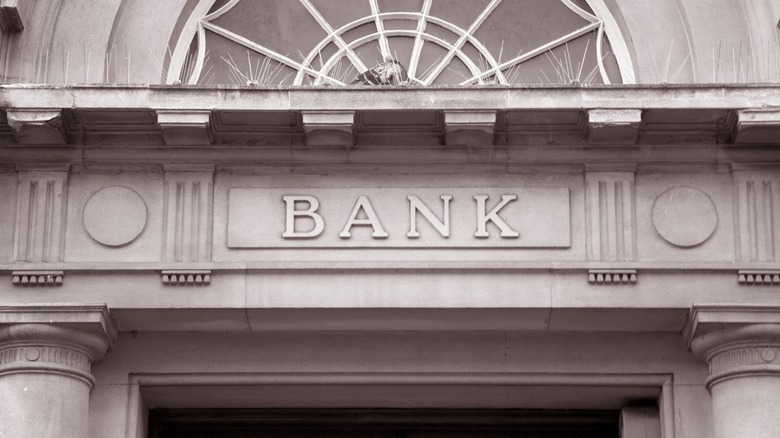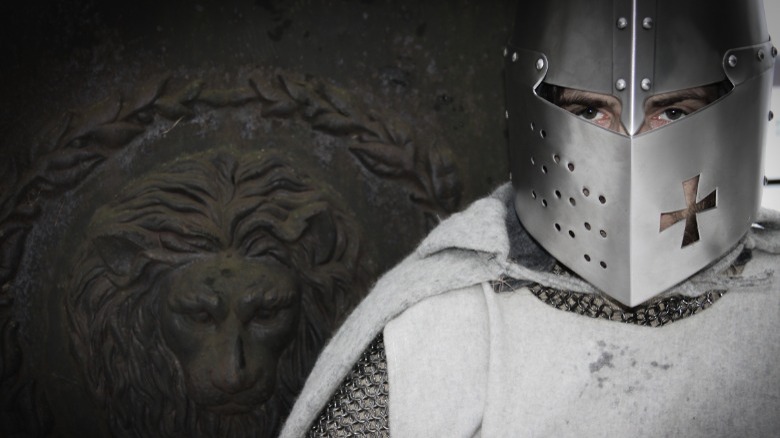Why Modern Banking Has The Crusades To Thank For Its Existence
In today's world, it's hard to imagine society being able to function without a banking system as we know it. In previous generations, you had to do everything by hand and in person. With the advancement of technology, keeping track of and handling your money is as easy as having an app on your phone. Often, we don't even have to carry physical currency or cash anymore. As dealing with money gets more streamlined, it's easy to forget what the origins of modern banking even are.
The earliest concept of a bank dates back to the ancient Mesopotamians (per Britannica). In those days, buildings like temples or large houses would be used to store valuable supplies that could be moved or transferred with written receipts. Concepts like this can be found in many civilizations, but the structure of banks as we know them today became evident during the Crusades and had some unlikely ties to one of history's most mysterious secret societies.
The Knights Templars' System of Banking
The legends and mystique that surround the Knights Templar are numerous and varied. Some portray them as heroes of the faith, while others say they were perverse and confessed to unthinkable things. However, according to History, they were devout Christians who protected Europeans who were traveling to the Holy Land. While they escorted Christian pilgrims on their journey, they were also fierce and well-trained warriors who did the bidding of the pope in the name of their faith.
Though they were reportedly legendary fighters, they appeared to be pretty savvy as well — they set up the precursor to the modern banking system we know today. It began with a network that connected various places across Europe so that citizens traveling to the Holy Land could deposit the money they planned to use for the journey (per The New Barcelona Post). In return, they would get a receipt of sorts — a "letter of credit" — that would allow them to be reimbursed at a different location in the network. This system meant travelers didn't have to worry about being robbed of their money while on their journey.
Their Banking Practices May Have Contributed To Their Demise
The banking system set up by the Templars was similar to an earlier flying money system that had been utilized by the Chinese — with one major difference. Chinese dynasties ran their operation via government control, while the Templars' institution was privately owned by the pope (per The Barcelona Post).
As the Templars were an extension of the pontiff, they gained a lot of influence and money by managing these "banks." They eventually expanded into other areas of finance like credit and loans. This particular move gave the Templars a lot of power, which eventually made people like King Philip IV of France very nervous. So when King Philip was allegedly denied more loans by the Templar bank after he already owed them tons of money, he reportedly decided to get even. According to History, King Phillip arrested many Templars on October 13, 1307, and within five years, the organization was dissolved, resulting in the deaths of many knights. The wealth that the Knights Templar accumulated over the years is "missing" and has resulted in many rumors of a massive Templar treasure that has been hidden for centuries.


